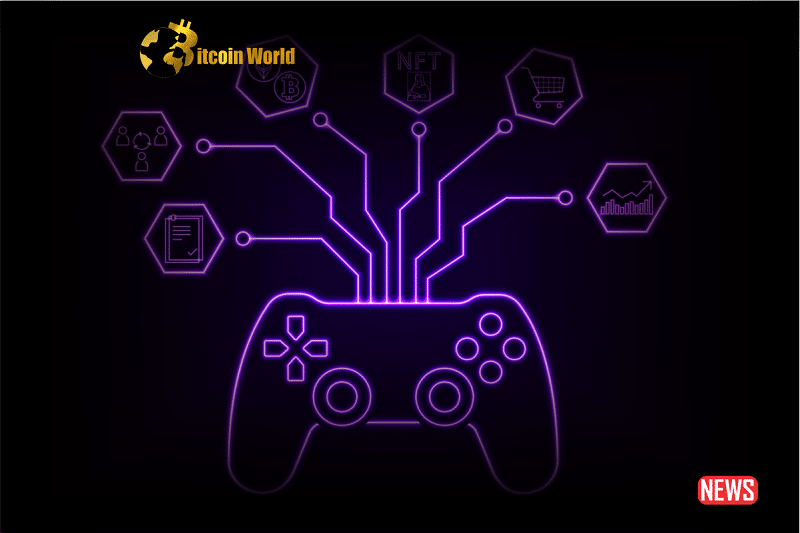Imagine a world where your in-game achievements truly belong to you, where your digital treasures aren’t just fleeting pixels but valuable assets. That’s the promise of Web 3.0 gaming, a revolutionary shift in digital entertainment powered by blockchain technology. With projections soaring past $30 billion by 2030, it’s clear this isn’t just a fad. But as this exciting frontier unfolds, what are the hurdles and the hidden gems awaiting players and developers alike?
The Immersive Gameplay Hurdle: Can Web 3.0 Games Compete?
Let’s face it, the gaming world is already overflowing with visually stunning and deeply engaging titles crafted by industry giants. Web 3.0 games are stepping into a ring with seasoned champions. The challenge? Delivering that same level of captivating gameplay while integrating the complexities of blockchain. It’s about more than just adding tokens; it’s about creating a seamless and enjoyable experience that keeps players hooked.
The Onboarding Maze: Is Getting Started Too Complicated?
Think about introducing your non-crypto-savvy friend to a Web 3.0 game. Wallets, gas fees, NFTs… it can sound like a foreign language! This complex onboarding process is a major barrier to entry. High initial costs for in-game assets can also deter new players. But within these challenges lie incredible opportunities. Imagine the possibilities when players truly own their in-game items and contribute to a thriving game economy!
Turning Tides: How Challenges Become Opportunities
So, how do we transform these obstacles into stepping stones? Here’s where the magic happens:
- Focus on Fun First: The core of any successful game is engaging gameplay. Web 3.0 features should enhance, not overshadow, the fun.
- Simplify the Start: Streamlining the onboarding process is crucial. Think user-friendly interfaces, educational tutorials, and perhaps even ‘guest’ accounts to let players try before diving deep.
- Lower the Gates: Reducing initial investment costs can attract a wider audience. Consider offering free-to-play options with opportunities to earn or acquire blockchain assets later.
Success Stories: Learning from the Pioneers
Several Web 3.0 games are already making waves. Let’s take a quick look at a few examples:
- Alien Worlds: A popular NFT metaverse where players compete for resources on different planets.
- Splinterlands: A collectible card game leveraging blockchain for true ownership of digital assets.
- Planet IX: A strategy game where players own and develop virtual land parcels represented as NFTs.
These games highlight the importance of strong community building, consistent updates, and, of course, compelling gameplay loops.
Bridging the Gap: How Do We Reach the Mainstream?
To truly take off, Web 3.0 gaming needs to resonate with the vast audience of traditional gamers. How do we bridge this divide?
- Elevate the Experience: Focus on creating high-quality, immersive gameplay that rivals traditional titles.
- Smart Tokenomics are Key: A well-designed in-game economy is vital for long-term sustainability and player engagement.
- Build Complete Ecosystems: Think beyond just the game itself. Consider marketplaces, social features, and opportunities for player-generated content.
Addressing the Elephant in the Room: Security Concerns
Blockchain technology, while revolutionary, comes with its own set of risks. Smart contract vulnerabilities and phishing attacks are genuine concerns. Developers have a responsibility to:
- Prioritize Security: Implement robust security measures and conduct thorough audits of smart contracts.
- Educate Players: Provide clear guidance on how to stay safe and avoid scams.
Looking Ahead: What Does the Future Hold for Web 3.0 Gaming?
The future of Web 3.0 gaming is bright, brimming with potential for innovation. Imagine these possibilities:
- AI Integration: More dynamic and personalized gaming experiences driven by artificial intelligence.
- NFT Adoption by Giants: Imagine your favorite traditional game incorporating NFTs – the impact could be transformative.
- The Inevitable Convergence: The lines between traditional gaming and blockchain technology will continue to blur, leading to exciting new hybrid models.
Ultimately, the heart of gaming remains the same: to entertain, connect, and enrich our lives. As Web 3.0 gaming evolves, developers must hold onto these core values while pushing the boundaries of what’s possible. The journey might have its bumps, but the destination – a more engaging, rewarding, and player-centric gaming landscape – is well worth the effort.
Disclaimer: The information provided is not trading advice, Bitcoinworld.co.in holds no liability for any investments made based on the information provided on this page. We strongly recommend independent research and/or consultation with a qualified professional before making any investment decisions.


